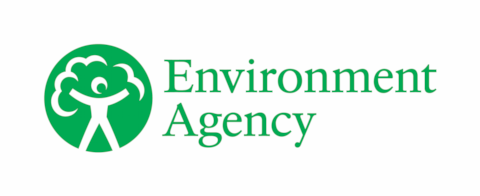Lincolnshire and Northamptonshire water situation: January 2025 summary
Published 12 February 2025
Applies to England
1. Summary
Following 3 consecutive months of normal rainfall, Lincolnshire and Northamptonshire area received above normal levels of rainfall (67mm), which was 130% of the long-term average (LTA). Rainfall across the area ranged from 53mm to 77mm (114% - 144% of the LTA), meaning that catchments received normal to above normal rainfall for this time of year. Soil moisture deficits (SMD) decreased in all hydrological areas. By the end of January, the area had an SMD of 1.3mm, which falls within the notably low category for this time of year. River flows at most sites responded in line with the rainfall received across January. Monthly mean river flows ranged from 121% to 208% of the LTA, with classifications ranging from normal to notably high. Following the above average rainfall and notably low SMD across the area in January, groundwater levels remained normal or higher at all sites with available data. With the exception of Covenham, reservoirs in the area ended the month above their normal operating curves.
2. Rainfall
Overall, January brought above normal levels of rainfall, with an average total of 67mm – 130% of the LTA for Lincolnshire and Northamptonshire. A significant proportion of January’s rainfall fell in the first week of the month, with almost 57% recorded across two days (4 and 5 January).
On the 5 January, an Atlantic low-pressure system brought substantial rainfall. Totals included 38mm recorded in Louth Grimsby and Ancholme, 37mm in Witham to Chapel Hill, and an average of 31mm of rainfall across the 6 hydrological areas. This made it the wettest day of the month. Rainfall was generally slightly higher in the northern areas than in the south. Rainfall across the hydrological areas ranged from 53mm to 77mm (114% to 144% of the LTA), resulting in classifications of normal to above normal rainfall for this time of year.
Three-month rainfall totals showed normal levels in almost all of the hydrological areas, except for the Upper Welland and Nene catchment, which were classified as above normal. The 6-month and 12-month long-term rainfall maps reflect a north-south trend, with higher totals received in the south compared to the north.
3. Soil moisture deficit and recharge
Due to the normal to above normal levels of rainfall and cooler temperatures associated with this time of year, SMD decreased in all hydrological areas. On average, SMD for the area decreased from 4mm at the end of December to 1.3mm by the end of January. This figure is within the notably low range for the time of year. The SMD difference-to-LTA (mm) map shows all hydrological areas are in the -25mm to -6mm category, indicating that they are slightly wetter than normal for the time of year.
4. River flows
Monthly mean river flows ranged from 121% to 208% of their long-term averages, and from normal to notably high classification. In most sites river flow responded in line with the amount of rainfall received in January. Three of the 12 sites were considered to be notably high, 8 at above normal level while the remaining site (Wansford) was classified as normal for the time of year.
5. Groundwater levels
Following the above normal levels of rainfall and notable low SMD across the area in January, groundwater levels remained normal or higher at all sites with data. With the exception of Leasingham Exploratory, the groundwater level trends showed a slight increase at all monitoring sites with data. The groundwater level at Leasingham Exploratory is relatively unchanged from end of December to end of January but has dropped from above normal levels to normal levels for the time of year. During January, Leasingham Exploratory did peak at exceptionally high levels following the heavy rain at the start of the month but by the end of January levels were starting to decline.
6. Reservoir stocks
With the exception of Covenham, reservoirs in the area ended the month above their normal operating curves. The level at Covenham was 4% below target in January, however levels are not alarmingly low and are on the way up towards the normal operational curve.
7. Environmental impact
During January, there were 36 flood alerts, and 40 flood warnings issued. All transfer schemes remained off throughout January. No licence cessations were issued.
8. Forward look
8.1 Probabilistic ensemble projections for river flows at key sites
March 2025: All sites are showing a slightly increased probability of greater than normal flows with none of the modelled rainfall scenarios showing exceptionally low level.
June 2025: The two Nene sites are showing increased probabilities of normal flows. North Brook is showing a reduced probability of extreme flows (both high and low).
8.2 Probabilistic ensemble projections for groundwater levels in key aquifers
March 2025: All sites are showing an increased probability of groundwater levels being normal or higher with none of the modelled rainfall scenarios showing exceptionally low levels.
September 2025: All sites are showing a reduced probability of exceptionally/notably low levels.
Author: Pan Hydrology Team, Hydrology-EAN-and-LNA@environment-agency.gov.uk
Contact Details: 03708 506 506
All data are provisional and may be subject to revision. The views expressed in this document are not necessarily those of the Environment Agency. Its officers, servants or agents accept no liability for any loss or damage arising from the interpretation or use of the information, or reliance upon views contained in this report

